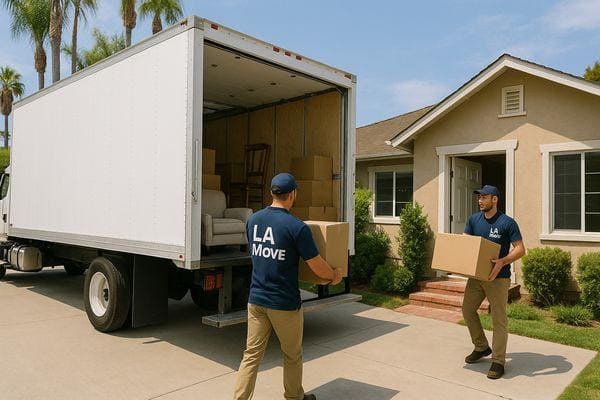
Many small businesses and individual producers face significant hurdles in getting their unique products from creation to consumer. The journey of locally sourced goods often involves a complex web of logistical challenges that can hinder growth and market reach. Without efficient systems, even the most innovative products struggle to find their audience beyond immediate vicinities. This bottleneck affects artisans, farmers, and specialty manufacturers alike, limiting their potential and market presence.
One of the primary issues is the fragmented nature of available transport options. Traditional large-scale freight services are often ill-suited for the irregular schedules and smaller volumes typical of local producers. This mismatch leads to higher costs and inefficiencies, making it difficult for small businesses to compete with larger entities that benefit from economies of scale. The lack of tailored local delivery solutions forces many to rely on personal vehicles or informal networks, which are neither scalable nor consistently reliable.
Furthermore, expanding beyond a hyper-local radius into broader regional transport presents another layer of complexity. Navigating diverse routes, managing varying regulations, and ensuring timely arrivals across wider areas requires specialized knowledge and resources that are often out of reach for independent creators. The absence of reliable and consistent transport infrastructure can severely restrict a business's ability to tap into new markets and grow its customer base effectively, stifling innovation and expansion.
The cost factor is also a major deterrent. For small businesses, every expenditure must be carefully justified. Finding affordable hauling services that don't erode already thin operating margins is a constant struggle. Many transport providers price their services based on volume or distance, which can be prohibitive for those needing to move just a few items or a small load transport. This economic barrier often prevents producers from scaling up or even maintaining consistent distribution channels, impacting their sustainability.
Root Causes of Distribution Bottlenecks
-
Limited Specialized Infrastructure: The existing transport infrastructure is largely optimized for large-scale commercial operations, leaving a significant gap for specialized courier hauling and small load transport needs. This creates a reliance on general services that are often not cost-effective for smaller, more frequent consignments.
-
High Operational Costs for Small Volumes: Operating a fleet of vehicles involves significant expenses, from fuel and maintenance to insurance and labor. When these costs are spread across small, infrequent loads, the per-unit expense becomes prohibitively high for both transport providers and their local business customers.
-
Lack of Centralized Logistics Platforms: Many local producers lack access to integrated logistics services or platforms that can efficiently match their transport needs with available carriers. This often leads to manual, time-consuming coordination efforts and missed opportunities for consolidating shipments, increasing inefficiency.
Strategic Solutions for Enhanced Local Distribution
Solution 1: Optimized Route Planning and Consolidation
One effective solution involves implementing advanced route optimization technologies coupled with a consolidation model. By grouping multiple small load transport requests from different local businesses within the same geographic area, transport providers can maximize vehicle capacity and minimize travel distances. This approach drastically reduces fuel consumption and operational hours, contributing to more sustainable operations.
Simple Transport Solutions LLC leverages sophisticated algorithms to identify optimal routes, ensuring that goods are picked up and delivered efficiently. This method not only lowers the per-item cost for each producer but also enhances the overall reliability of the local delivery service. It transforms fragmented individual shipments into a cohesive, cost-effective network, benefiting all stakeholders.
Solution 2: Flexible On-Demand Transport Services
Another key proposal is the development of highly flexible, on-demand transport services specifically designed for the unique needs of local producers. This means offering various vehicle sizes, from vans for quick transport of smaller items to larger trucks for moving help with bigger loads, available with short notice. This adaptability is crucial for businesses with fluctuating transport requirements.
Such a service allows businesses to schedule transport precisely when needed, avoiding the commitment to fixed schedules or minimum volume requirements that often burden them. Simple Transport Solutions LLC focuses on providing this agility, enabling producers to respond quickly to market demands without incurring unnecessary storage or waiting costs, thereby enhancing operational fluidity.
Solution 3: Community-Based Logistics Hubs
Establishing community-based logistics hubs can significantly streamline the collection and distribution process. These hubs would serve as central drop-off and pick-up points for local goods, reducing the need for individual door-to-door collections for every item. This model is particularly beneficial for regional transport and freight delivery, creating efficiencies across wider areas.
By consolidating items at a central location, transport providers can execute more efficient routes, and producers gain a reliable point for their outgoing shipments. This collaborative approach fosters a stronger local supply chain, making affordable hauling more accessible and sustainable for everyone involved. Such hubs can become vital nodes in the network, supported by providers like Simple Transport Solutions LLC.
Potential Risks and Mitigation Strategies
-
Initial Adoption Reluctance: Local businesses might be hesitant to switch from established, albeit inefficient, methods due to perceived risk or inertia. Recommendation: Offer introductory incentives, clear demonstrations of cost savings, and convenience to build trust and encourage early adoption.
-
Scaling Challenges: As demand for quick transport and logistics services grows, maintaining flexibility and efficiency can become complex. Recommendation: Implement scalable technology solutions and continuously invest in fleet expansion and driver training to manage increased volume effectively.
-
Route Optimization Complexity: Dynamic route planning can be challenging with fluctuating demand and diverse locations, potentially leading to delays in freight delivery. Recommendation: Utilize advanced AI-driven software for real-time adjustments and maintain a buffer in scheduling to absorb unexpected changes, ensuring reliability.



